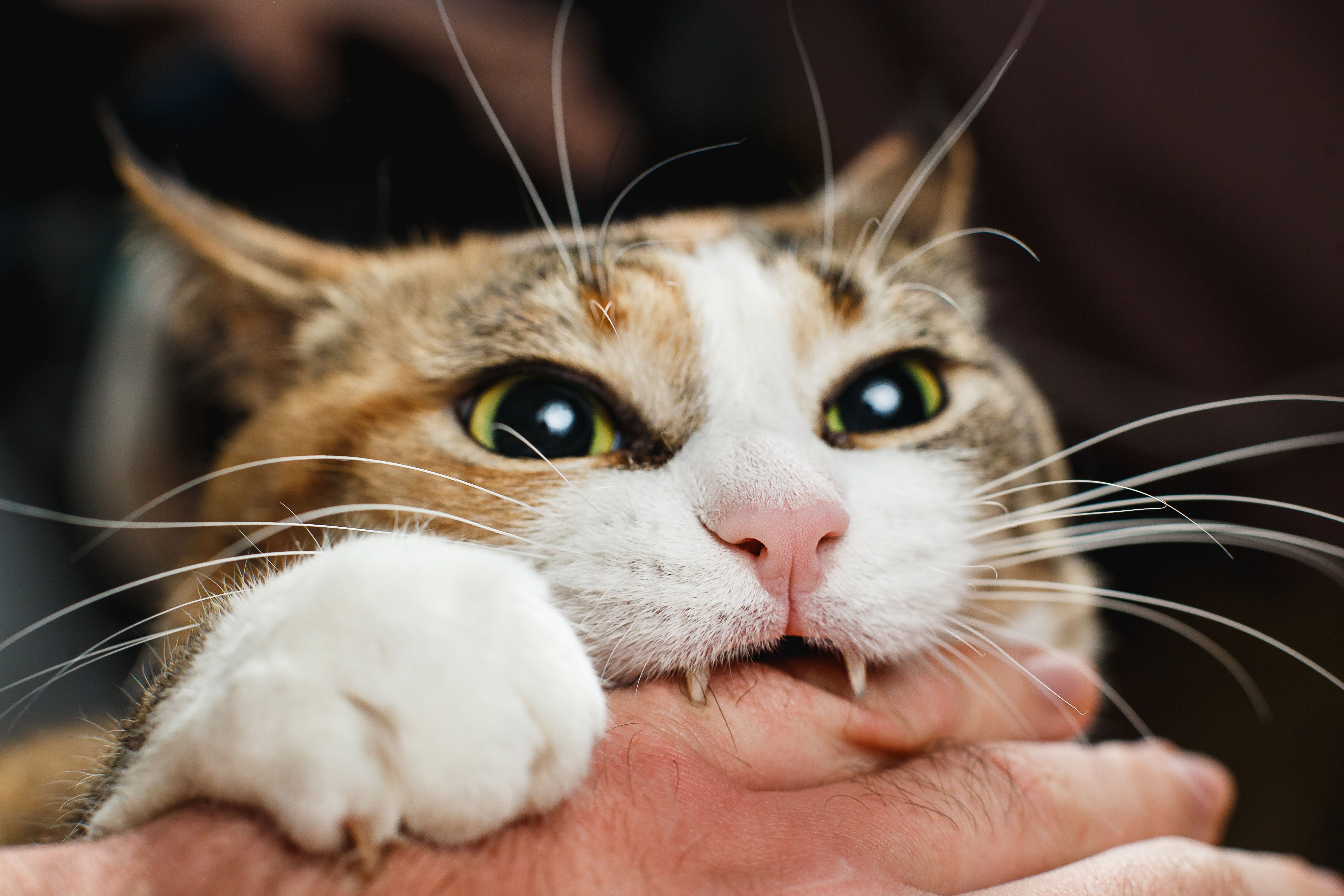
Does your cat have a habit of biting? You’re not alone. While it’s relatively common behaviour—especially in kittens—it can become a serious problem if left unchecked. Adult cat bites can be painful and even dangerous, and kitten nips, while seemingly harmless, shouldn’t be ignored either. The good news? Cats can be taught not to bite, no matter their age.
Below, you’ll find eight practical strategies to help curb biting. But first, it’s important to understand why your cat might be biting in the first place.
Recognising the root cause of your cat’s biting behaviour is the first step towards helping them stop. Here’s a breakdown of the most common reasons:
If a normally gentle cat starts biting unexpectedly, it could be due to pain or discomfort. A sore joint, a hidden injury, or even dental pain could make them lash out when touched. If biting is sudden or specific to a certain area, consult your vet to rule out any underlying health concerns.
Cats may bite when they feel frightened, cornered, or overwhelmed. This is a defensive response tied to their fight-or-flight instinct. Common stressors include loud noises, unfamiliar people, or changes in the household. In some cases, a cat that successfully stopped an unwanted experience (like a trip to the vet) with a bite may try that tactic again.
Sometimes affection can tip into irritation. A cat enjoying strokes or cuddles might suddenly nip to say, “That’s enough now.” Watch for early warning signs like twitching tails, flattened ears, or dilated pupils—these often precede a bite.
Kittens, and even some adult cats, bite during play as a way to mimic hunting. It’s natural behaviour, especially in solo kittens who haven’t had littermates to teach them social boundaries. Rough play should be gently discouraged early on to prevent it becoming a habit.
If a cat wants interaction, food, or simply some entertainment, they may try biting to get your attention—especially if meowing or pawing hasn’t worked. If this behaviour is rewarded with a reaction, they’ll be more likely to try it again.
Although cats aren’t strictly hierarchical, some do display dominant behaviours when feeling insecure or competitive—especially in multi-cat households. Biting can be part of how they assert themselves, often accompanied by growling or swatting.
If biting has previously helped your cat avoid something they didn’t enjoy—like nail trimming or being picked up—they may have learned that it works. Over time, this can become an ingrained habit unless gently retrained.
Teaching a cat to stop biting takes consistency, observation, and a bit of patience. Here’s how to get started:
Before tackling behavioural changes, it’s essential to rule out medical causes. Pain or illness can trigger unexpected aggression, so book a vet appointment if biting appears suddenly or escalates.
Every cat has a personal tolerance for touch and play. Learn their signals and stop interaction before they reach the point of overstimulation. This helps prevent bites caused by frustration or discomfort.
Routine can reduce anxiety and over-arousal. Regular feeding times, play sessions, and quiet periods help your cat feel secure, which in turn lowers the likelihood of stress-related biting.
Never encourage rough play using your hands or feet. It might seem harmless when they’re small, but it reinforces the idea that your limbs are fair game. Use wand toys or other interactive items to channel their energy appropriately.
If your cat begins to play too roughly, calmly interrupt and redirect them to a toy. Offer a reward for using the toy instead of your hand. Over time, they’ll associate toys—not fingers—with fun.
Reward calm and gentle play with treats, praise, or a bit of affection. Reinforcing the behaviour you want to see is often more effective than trying to punish unwanted actions.
If your cat bites, avoid shouting or physical correction—it can increase stress or damage trust. Instead, remove yourself from the situation. With repetition, your cat will learn that biting ends interaction.
If you are bitten, don’t yank your hand back—this can encourage your cat to clamp down. Instead, gently move your hand towards their mouth or hold it still until they release. It’s a more effective way to end the moment without triggering further aggression.
Biting is a form of communication—whether it’s frustration, fear, play, or a request for space. Once you understand the message, you can begin reshaping the behaviour with consistency, patience, and a proactive approach.
Still unsure why your cat is biting or how to manage it? Send me a message—I’d be happy to help guide you and your feline towards calmer, bite-free days.